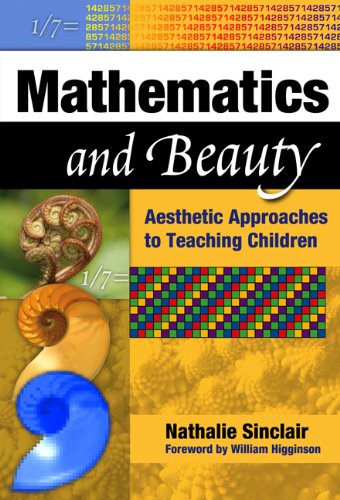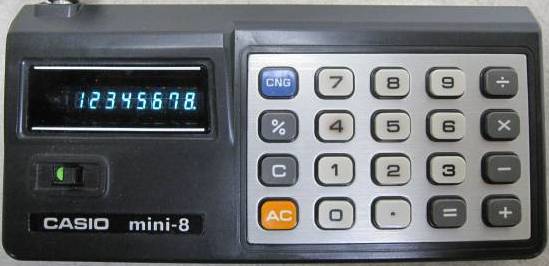In the 1970s, my childhood friend Tim owned an Activision console and a variety of game cartridges. Tim was the envy of our block, but no matter how much I enjoyed a rousing game of Pong, I knew that my electronic toy was even better. No, I didn’t own the rival Atari game system: I had the pleasure of playing with my father’s Casio mini-8 calculator.
As you can see at right, the Casio was nothing fancy. You could add, subtract, multiply, and divide, and that was it. I didn’t care—I loved pressing the buttons and watching the digits appear on screen.
The Casio exposed me to number patterns that I had not seen in my elementary school math classes. I remember entering 1/3 into the calculator and viewing the result of 0.3333333. How amazing to see this sequence of threes! I confess, though, that I did not consider whether the pattern continued past the rightmost 3. And if I had typed 1/7 and seen 0.1428571, I probably would have assumed this to be the precise value of the fraction.
Today’s handheld calculators show more digits than my old Casio, but they still don’t make it easy to explore patterns in the decimal expansions of fractions. Below (and here) is an interactive model of a color calculator. It’s different from a traditional calculator in several ways. It converts fractions less than one to their decimal equivalents, but it assigns each digit in the decimal expansion its own color (all 4’s are green, all 5’s are blue, etc.) By pairing each digit with a color, it becomes easier for students to spot patterns in the digits.
And whereas traditional calculators show a limited number of digits to the right of the decimal point, the color calculator shows as many digits as students would like, simply by dragging the red point. The digits are displayed in rows and columns, and students can adjust the number of rows or columns to highlight repeating patterns.
The current fraction entered into the calculator is 1/7, but you can change the numerator and denominator to create other fractions less than one.
Here are just some of the investigations students can explore with the color calculator:
- Look for color patterns in the rows, columns, and diagonals of the decimal representation. Drag the red point to change the patterns and to create new ones.
- Press Hide Digits to view just the color patterns without getting distracted by the digits.
- Find fractions whose decimal representations eventually “terminate” and end in all zeros. How can you tell without checking whether a fraction has this property?
- If the decimal representation of a fraction contains 10 zeros in a row, does that imply the decimal representation terminates?
- Find fractions whose decimal representations consist of just one repeating digit. (e.g., 0.33333…) Can you find a fraction for every digit 1 through 9?
- Find fractions whose decimal representations have really long sequences of digits that eventually repeat. Do you think there are fractions whose decimal representations never repeat?
- What do you notice about the decimal representations of the fractions 1/7, 2/7, 3/7, 4/7, 5/7, 6/7?
- What do you notice about the decimal representations of fractions with a denominator of 13? How do these patterns differ from the ones you noticed for fractions with a denominator of 7?
 The color calculator concept originates from Nathalie Sinclair, a professor of mathematics education at Simon Fraser University. In her version of the color calculator, there are no numbers visible in the decimal representation of each fraction. Students focus exclusively on the patterns visible in the colors. You can read about Sinclair’s student interviews with the color calculator in her engaging book Mathematics and Beauty. You can also watch this video of Sinclair discussing the color calculator (starting approximately at 16:00).
The color calculator concept originates from Nathalie Sinclair, a professor of mathematics education at Simon Fraser University. In her version of the color calculator, there are no numbers visible in the decimal representation of each fraction. Students focus exclusively on the patterns visible in the colors. You can read about Sinclair’s student interviews with the color calculator in her engaging book Mathematics and Beauty. You can also watch this video of Sinclair discussing the color calculator (starting approximately at 16:00).
An annotated list of all our elementary-themed blog posts is here.
